題名
Systematic Review of Hip Arthroscopy for Femoroacetabular Impingement: The Importance of Labral Repair and Capsular Closure
大腿関節インピンジメントのための股関節鏡検査の系統的レビュー:唇の修復と被膜の閉鎖の重要性
URL
Abstract
原文
Purpose
To evaluate the safety and efficacy of hip arthroscopy for femoroacetabular impingement syndrome by assessing complications, comprehensive procedure survivorship, and the influence of labral and capsular management on procedure survivorship.
Methods
A systematic review of multiple medical databases was performed using the Preferred Reporting Items for Systematic Reviews and Meta-Analyses (PRISMA) guidelines and checklist. All clinical outcome studies that reported on the presence or absence of reoperation after hip arthroscopy for femoroacetabular impingement syndrome were eligible for inclusion. Data pertaining to patient demographic characteristics, surgical technique (specifically labral and capsular management), patient-reported outcomes, complications, reoperation, and conversion to arthroplasty were extracted from each study.
Results
A total of 68 studies (7,241 hips) were included. Most were Level IV studies (63%). Complications occurred in 1.9% of cases. The most common complications were neurologic (53%), heterotopic ossification (24%), infection (15%), and thromboembolic (7%). Conversion to total hip arthroplasty (456 cases) was the most common reason for reoperation, followed by revision hip arthroscopy (226 cases) and periacetabular osteotomy (7 cases). The rate of arthroplasty conversion was lower than 10% in 43 of 59 studies reporting this outcome. The average interval to arthroplasty conversion was 58 months. Between 2009 and 2017, the performance of labral repair increased from 19% to 81% of cases and capsular closure increased from 7% to 58% of cases.
Conclusions
Arthroplasty conversion occurred in fewer than 10% of cases in the clear majority of series. Labral repair (compared with labral debridement) and capsular closure (compared with unrepaired capsulotomy) were associated with a lower risk of conversion to arthroplasty. Throughout the study interval, there were shifts in surgical technique favoring labral repair over debridement and capsular repair over unrepaired capsulotomy. The study is limited by selection bias because cases in which labral and capsular repair was performed may have had superior tissue that was more amenable to repair.
Level of evidence: Level IV, systematic review.
Copyright © 2019 Arthroscopy Association of North America. Published by Elsevier Inc. All rights reserved
翻訳
目的
大腿骨肩甲骨インピンジメント症候群に対する股関節鏡手術の安全性と有効性を、合併症、包括的手技生存率、臼蓋・被膜管理が手技生存率に及ぼす影響を評価することにより検討する。
方法
PRISMA(Preferred Reporting Items for Systematic Reviews and Meta-Analyses)ガイドラインとチェックリストを用いて、複数の医学データベースの系統的レビューを実施した。大腿骨肩甲骨インピンジメント症候群に対する股関節鏡検査後の再手術の有無について報告したすべての臨床結果研究を含めることができた。患者の人口統計学的特徴、手術手技(特に臼蓋管理)、患者報告アウトカム、合併症、再手術、人工関節置換術への転換に関するデータが各研究から抽出された。
結果
合計68の研究(7,241関節)が対象となった。ほとんどがレベルIVの研究であった(63%)。合併症は1.9%の症例に発生した。最も多かった合併症は、神経系(53%)、異所性骨化(24%)、感染症(15%)、血栓塞栓症(7%)であった。再手術の理由は、人工股関節全置換術への変更(456例)が最も多く、次いで股関節鏡の再手術(226例)、股関節周囲骨切り術(7例)であった。人工関節置換術への移行率は、この結果を報告した59件の研究のうち43件で10%未満であった。人工関節置換術への転換までの平均間隔は58ヶ月であった。2009年から2017年の間に、臼蓋修復術の実施率は19%から81%に、被膜閉鎖術の実施率は7%から58%に増加した。
結論
人工関節置換術への転換は、明らかに大多数のシリーズで10%未満の症例で発生した。関節唇修復術(関節唇剥離術と比較)と莢膜閉鎖術(修復しない莢膜切除術と比較)は、関節形成術への転換のリスクを低くすることと関連していた。研究期間を通じて、デブライドメントよりも関節唇修復、未修復の関節窩切除術よりも関節窩修復を好む手術手技のシフトがあった。この研究は選択バイアスによって制限されている。なぜなら、関節唇と莢膜の修復が行われた症例は、修復に適した優れた組織を有していた可能性があるからである。
エビデンスレベル レベルIV、システマティックレビュー。

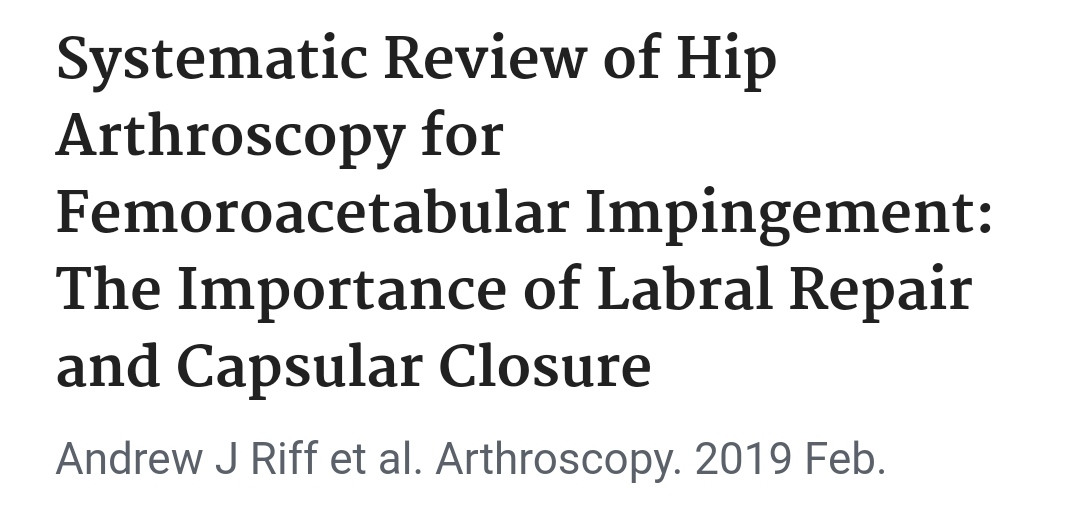

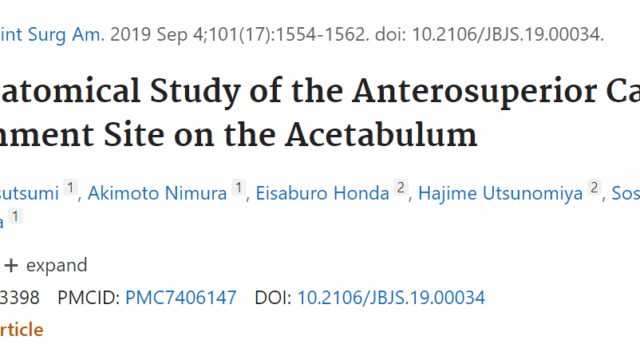
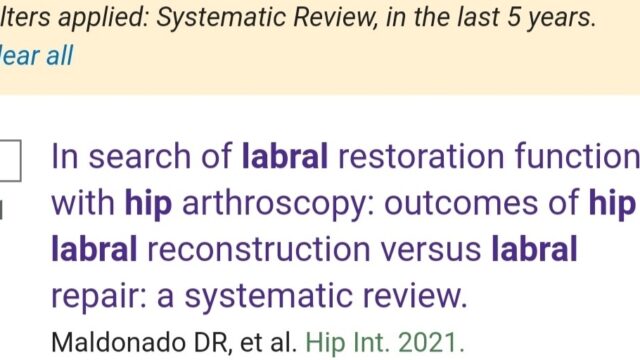
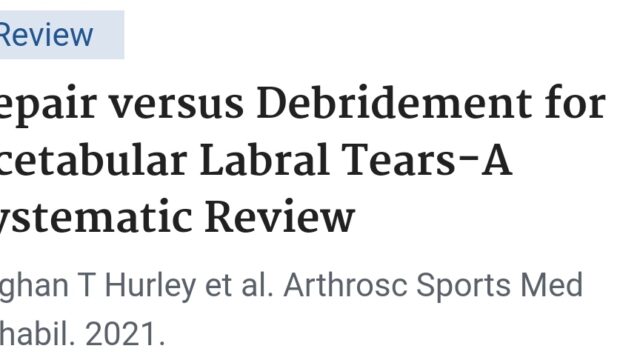
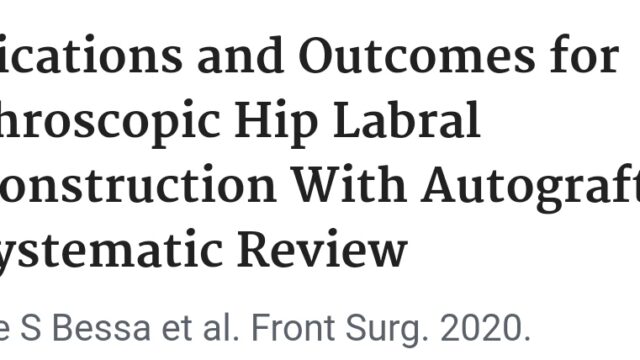
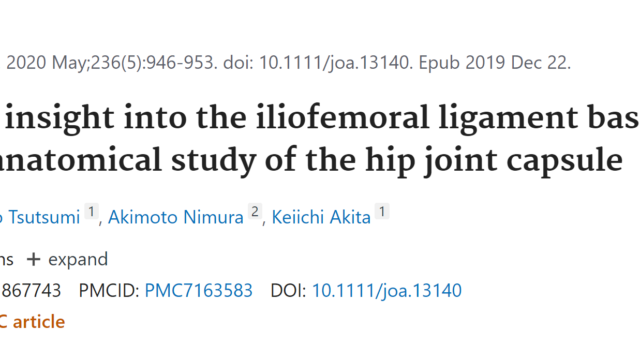

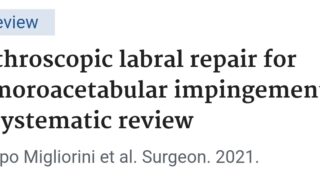







はじめまして。 とても興味をひかれました! ふだん改造ビーチサンダルやlun…
ありがとうございます。嬉しいです みちさんが保存療法でよくなることを願っています…
経過良好で安心しました^_^ やはりリハビリが大事なのですね。 術後の記事、…
お大事に下さい。こちらこそありがとうございました。
コメントありがとうございます。 心強いです。 金曜日に県内のスポーツ外来を受…